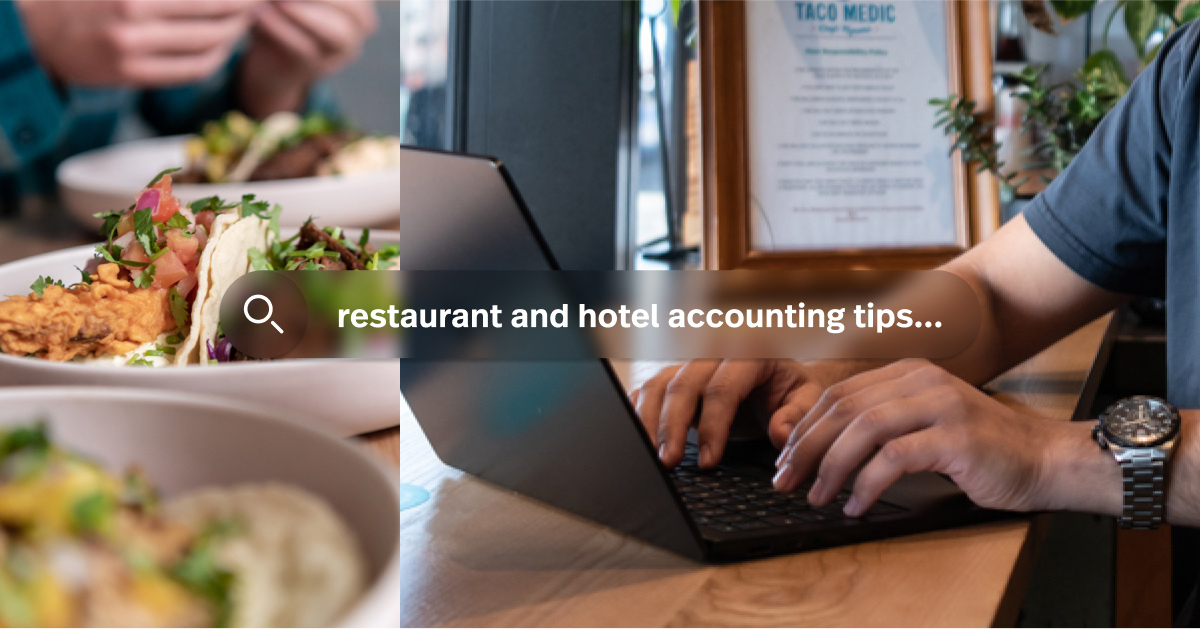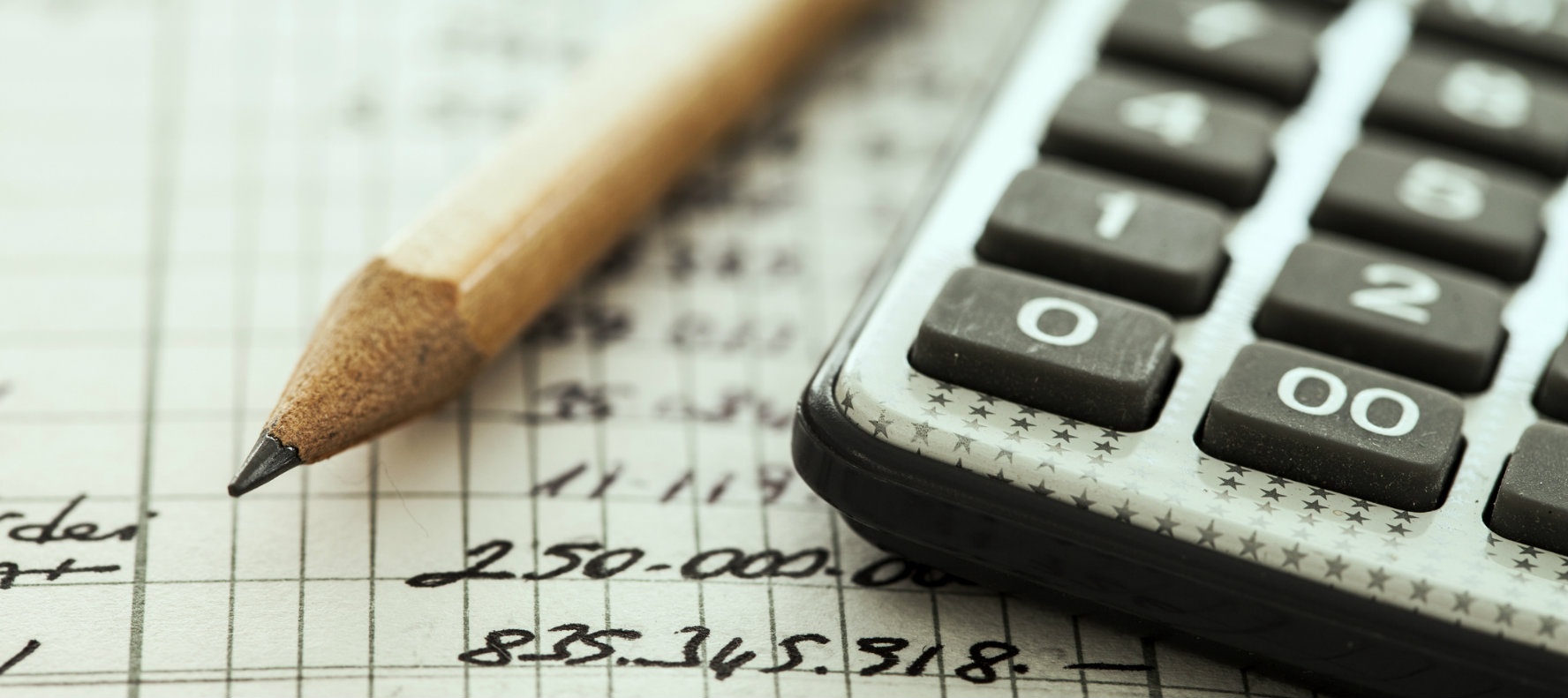
Keeping on top of your finances can be one of the most challenging parts of running a hospitality business, particularly if you manage a hotel or restaurant with lots of moving parts. However, efficient, accurate and streamlined accounting is essential for the success of any business.
To help make your accounting more manageable, we’ve compiled nine quick and easy tips for basic hotel and restaurant accounting to empower you to stay on top of your finances.
What is hotel and restaurant accounting?
Before we dive into our accounting tips, let’s first take a step back and examine what hotel and restaurant accounting entails and why it’s important.
Hotel and restaurant accounting is the broad term used for the different processes associated with managing the financial records and transactions of hotels and restaurants. It involves everything from tracking revenue and expenses to payroll and managing operating costs.
The main goal of hotel and restaurant accounting is to ensure the accurate and efficient management of financial transactions, which will empower business owners to make informed decisions and remain compliant.
Why is hotel and restaurant accounting important?
Hotel and restaurant accounting is an essential cog in the inner workings of your business because it provides a clear and accurate picture of the financial health of your business.
Not only does it enable you and your management team to track your venue’s revenue and expenses, but it also provides the tools to monitor cash flow and dive into your business’s financial data. In turn, this allows your management team to understand what’s working and what’s not, empowering them to make more informed decisions about investments, expenses, and growth.
By accurately tracking your business’s financial data, you’ll be confident in your compliance with tax laws and regulations and be ready to provide any essential information during an audit.
Hotel and restaurant accounting: 9 tips to get started
Here are our nine tips to get you up and running with basic hotel and restaurant accounting.
- Getting set up
- Choose an accounting system
- Integrate your POS with your accounting system
- Set up your bookkeeping templates
- Partner with an accountant
- Track your revenue and expenses
- Numbers to keep an eye on
- Regularly reconcile your accounts
- Master your accounts payable and payroll
1. Getting set up
Setting up your accounting will be a relatively painless process as long as you’re armed with the right information before getting started.
Take the time to map out all of the financial information related to your business. This should include all types of transactions that’ll flow in and out of your business that you’ll need to track and report on, such as income from sales and expenses like rent and payroll.
You should also compile any relevant financial information that will make setting up your accounting systems quick and easy. This could be everything from your suppliers’ bank details to your own business bank accounts, tax information or outstanding loans.
Once armed with this information, it will be much more straightforward to set up your accounting system and populate your bookkeeping templates.

2. Choose an accounting system
From bookkeeping to budgeting, preparing financial statements, paying invoices and managing payroll, there’s a lot to consider when it comes to hotel and restaurant accounting. As a result, there are a number of accounting software tools that can help automate and streamline these processes, allowing venue owners to focus on growing and improving their business.
Accounting software is designed to help restaurants manage their end-to-end accounting process. Apps such as Xero typically include features such as sales tracking, expense tracking, and financial reporting, making it easy for restaurants to stay on top of their accounting.
It’s important to take the time to run through the features of each accounting system to see which best meets the needs of your hotel or restaurant. Most of the major accounting apps have different subscription tiers designed for small, medium and large businesses.
For example, the more basic packages will offer payroll for a small number of staff and have a cap on invoicing. Whereas premium plans will provide payroll services for more staff and include unlimited invoicing and bulk reconciliations. Therefore, it’s essential to research your options to ensure you’re opting for the right service at the best price.
3. Integrate your POS with your accounting system
When you’re researching the best accounting software for your business, it’s important to ensure it will seamlessly integrate with your point of sale (POS) system.
Integrating your accounting software with your POS means that any transactions inputted into your POS – be that cash, card or online payments – will automatically reconcile in your accounting system – saving you countless hours of number crunching after a long shift.
Your POS system will contain a wealth of financial data, such as sales numbers and inventory levels, all of which need to be reconciled in your accounting system to paint a clear picture of your business finances. Connecting these two systems will also reduce double handling and ensure your financial data accurately syncs in real time.
4. Set up your bookkeeping templates
Bookkeeping templates are pre-designed spreadsheets that are used to track and organise a hotel or restaurant’s finances. Bookkeeping templates are an excellent resource for owners and managers looking to save time on financial management and streamline their accounting processes.
Your bookkeeping templates will make it easier to track, analyze and report on the financial health of your business. They also provide a standardized format for recording all of the transactions that flow in and out of your venue to ensure your financial records are up-to-date and accurate, so you’ll always be ready for an audit or tax time.
While numerous bookkeeping templates are available for hotel and restaurant owners, there are four essential templates every business should have to keep on top of their finances.
- Chart of accounts: lists the different types of accounts you need to track, such as income, expenses, assets, liabilities, and equity.
- Profit and loss statement: details the revenues, expenses, and profits over a specific period, usually a month or a quarter. The main purpose of a P&L statement is to show the financial performance of your hotel or restaurant and determine whether it’s making a profit or incurring a loss.
- Balance sheet: provides a snapshot of a business’s financial position at a specific point in time. It lists the business’s assets, liabilities, and equity and shows how these elements are related.
- Cash flow statement: shows cash flow in and out of a hotel or restaurant over a specific period. This information can be used to make informed decisions about financing, investments, and other business activities.
5. Partner with an accountant
With the help of an accounting system and bookkeeping templates, it’s easy to keep on top of your numbers and manage your accounting in-house. However, it’s often advisable to partner with an accountant sporadically throughout the year, such as during tax time or an audit, to ensure everything is correct and you remain compliant.
While you won’t need to hire an accountant full-time, their services will provide valuable support and guidance, helping you achieve your financial goals and drive growth for your business.

6. Track your revenue and expenses
It’s crucial to regularly keep track of your revenue and expenses on a daily, weekly, monthly, quarterly and yearly basis. As a restaurant or hotel owner, these are some of the main revenue and expenses you should track.
Revenue:
- Sales from in-house dining and guest stays
- Revenue from catering and events, such as weddings and birthday parties
- Takeaway food and delivery sales, including from third-party apps like Uber
- Revenue from merchandise sales, such as branded t-shirts or cookbooks
- Revenue from third parties, such as booking and reservation sites
Expenses:
- Payroll and superannuation
- Rent and utility bills, such as gas, water and electric
- Insurance, such as public liability insurance
- Marketing and advertising costs, such as printing flyers and Facebook advertising
- Inventory costs for food, beverage and other supplies
- Licenses and permits, such as a liquor license
Taking the time to review your revenue and expenses will ensure that your accounting records are accurate and up to date. This will also allow you to quickly pinpoint any mistakes or discrepancies in your numbers so you can make the necessary adjustments.
Remember: always keep hold of receipts or invoices after you’ve paid your expenses. This will help with your financial reporting, and you may need to provide receipts and invoices during a financial audit or for tax purposes.
7. Numbers to keep an eye on
Alongside your bookkeeping reports and tracking your revenue and expenses, there are several other important numbers to keep an eye on to ensure your business is on track to remain profitable.
By tracking each of these key financial numbers, you’ll be able to paint a clear picture of how your venue is performing and understand which areas of your business are working well and which may need improvement.
- Cost of goods sold (COGS): the total cost of all the ingredients you use to make menu items, right down to the garnishes, condiments, and seasoning. On average, around one-third of your gross revenue goes towards paying for COGS.
- Prime costs: the sum of your total costs to sell food, drinks and products plus the labor costs of your employees. Your prime costs should be between 55% and 60%.
- Food cost: shows how much of your overall sales are spent on ingredients and food supplies. Your food cost percentage should sit around 28-35% of revenue.
- Contribution margin: the difference between the sale price of a product and the variable costs associated with its production and sales process.
- Inventory turnover ratio: how often you replace your inventory because of sales.
- Break-even point: when the revenue you make covers all your costs.
- Gross profit: the revenue generated from the sale of your goods and services.
- Net profit: the amount leftover from your gross profit after you deduct operating expenses such as payroll and tax, rent, utility bills, ingredients and equipment leasing costs.
8. Regularly reconcile your accounts
Account reconciliation is an essential hotel and restaurant accounting process that verifies every transaction across your accounts so that your final balances match. If your accounts don’t reconcile, it often means certain transactions haven’t been accounted for correctly, which may signify that funds are being misused or stolen.
To avoid any discrepancies, it’s important to ensure you regularly reconcile your accounts – ideally once a day at the end of your shift.
If you use accounting software that’s integrated with your POS system, all of your sales data will automatically sync from one system to the other. This expedites the reconciliation process, saving you time at the end of the day and drastically reducing the risk of errors resulting from manual calculations.
9. Master your accounts payable and payroll
Setting up an easy-to-follow process for your accounts payable and payroll will ensure you never miss a payment and make your financial reporting easier.
Your accounts payable (AP) is the money you need to pay your suppliers for the goods and services they provide. This includes everything from your delivery partners to utilities and internet, right through to the rent for your premises and food suppliers.
Many accounting systems let you set payment reminders when a payment is due or include automatic payments to suppliers, so you never miss an invoice deadline. Taking the time to set up these workflows, and ensuring your management team is across the process, will ensure your business always completes its AP on time, so you’ll rarely have to account for any unpaid invoices.
Like your accounts payable, it’s crucial to ensure your payroll is managed correctly and in a timely manner. While it’s easy to assume that payroll accounts for employee wages, there’s much more to it, such as calculating leave entitlements and taxes.
Similarly to your accounts payable, many accounting systems also run employee payroll. This makes it easy to set up employee profiles and input their salary and benefits so they always receive what they’re entitled to.
Keep on top of your hotel and restaurant accounting
Keeping on top of your accounting doesn’t have to be daunting or time-consuming. By following these basic hotel and restaurant accounting tips, it’s easy to take the reins and manage your accounting in-house with the help of your management team. Plus, with the help of your POS and an accounting system, you can ensure that your business’s financial records are accurate and up-to-date. This will empower you to make informed decisions about your business and ultimately drive growth and profitability.

News you care about. Tips you can use.
Everything your business needs to grow, delivered straight to your inbox.


